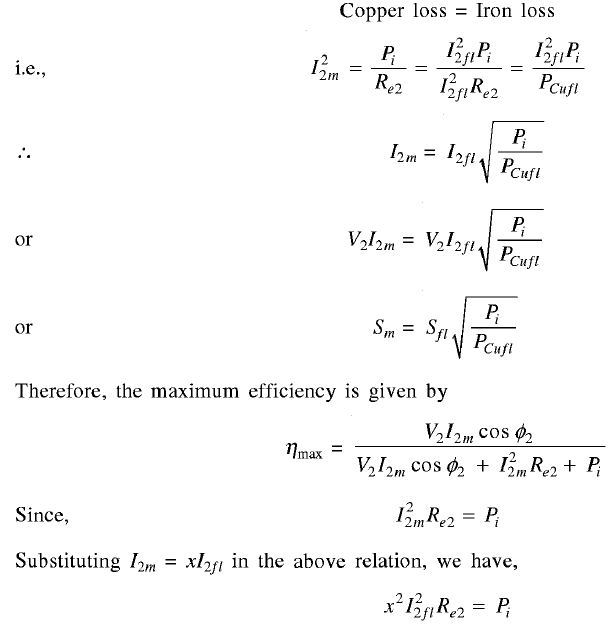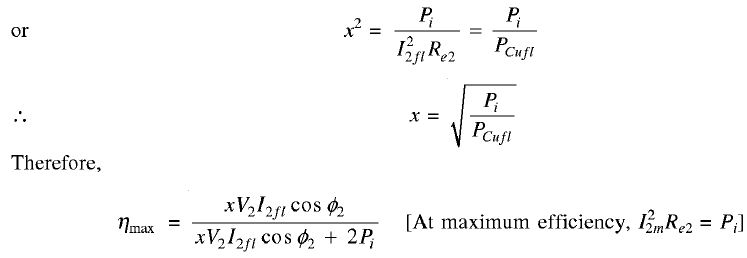Electrical Engineering ⇒ Topic : Current and kVA at Maximum Efficiency
|
|
| Harrison
| |
Let us assume the iron losses = Pi The total copper losses referred to the primary side = From Equation , In a given transformer, V1 is approximately constant and hence for a given value of /1 and cos Φ1 the efficiency will be maximum when the denominator of Eq. (1) is minimum. Thus, differentiating both the sides with respect to /1, we get will be maximum when d/d/1 = O Hence, the efficiency of a transformer is maximum when the variable copper loss is equal to the constant iron loss. From Eq. (2), it follows that at maximum efficiency, the primary current Similarly, at maximum efficiency, the load current where Re2 is the equivalent resistance of the transformer referred to the secondary side given by Re2 = R2 + (V2/V1)2R1 The efficiency versus load current curves are shown in Figure for different power factors FIGURE (a) Efficiency of a transformer as a function of the load current for different power factors For a given transformer, the efficiency decreases with a decrease in power factor. Distribution transformers are generally designed to give maximum efficiency at 75% of full-load | |
|
| |
| Sonali
| |
CURRENT AND kVA AT MAXIMUM EFFICIENCY Let Sfl = V2I2 is full load in VA, Sm = V2Im in VA at maximum efficiency, I2m secondary current at maximum efficiency, I2fI is full-load secondary current, and Pcufl cup is copper loss at full load
| |
|
| |
!! OOPS Login [Click here] is required for more results / answer



 ............. (1)
............. (1)